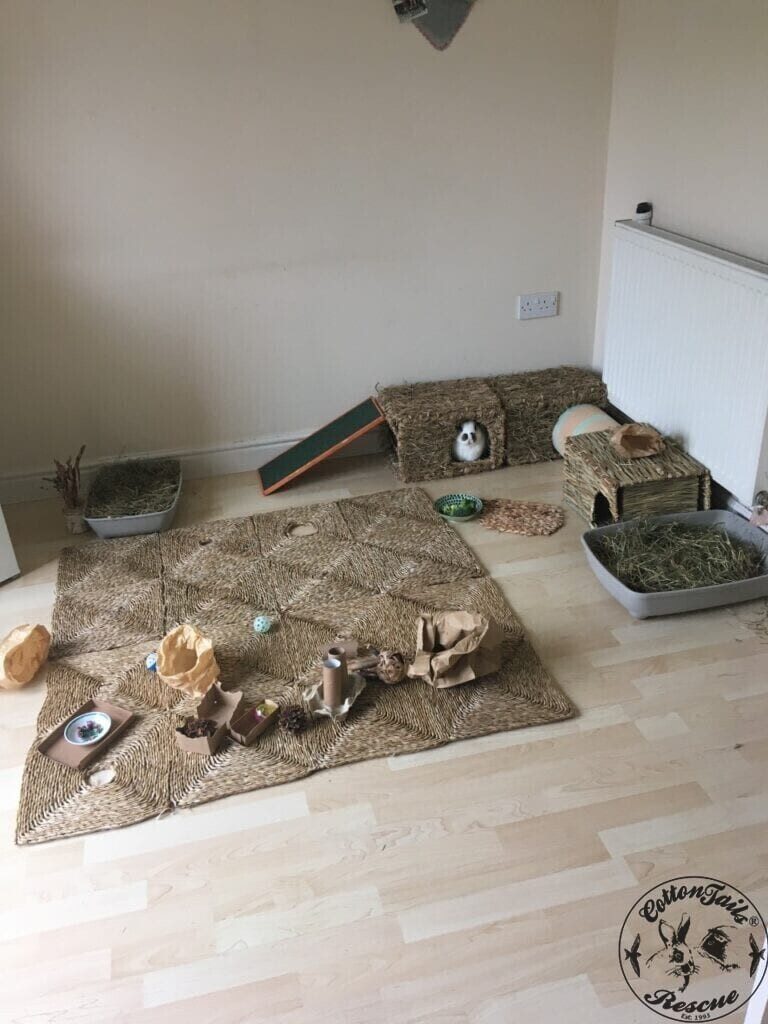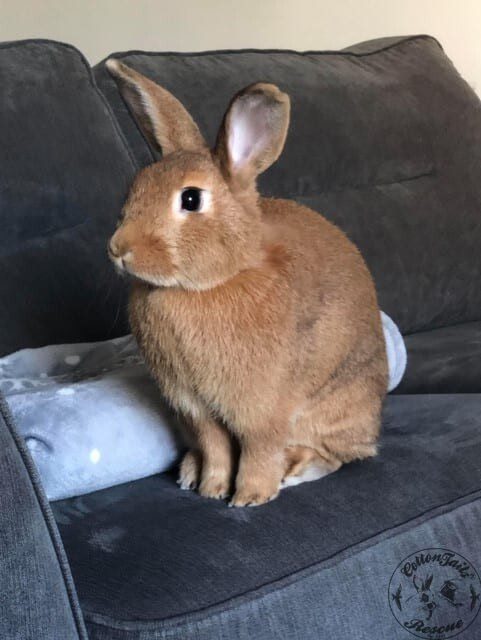So, are you seriously considering taking on a house rabbit or two? Read on! The first thing to know is that keeping a rabbit as a house pet does not mean you keep it in a cage. No rabbit should be caged without the option to take exercise, and house bunnies are no exception. Rabbits, by nature, are active at night and during the day, taking naps as and when it suits them, so it is not acceptable to shut a rabbit into a cage even at night or when you are out. Suppose the issue is safety for either the rabbit or your furniture. In that case, you need to set up an enclosure so the rabbit can run around if they cannot access other parts of the house or precious possessions or annoy other house inmates. If you think this is not feasible, a house bunny is probably not the best choice for you, and you either need to consider keeping a bonded pair outside in a safe enclosure or maybe even choose a different pet altogether that will suit your lifestyle and expectations better.
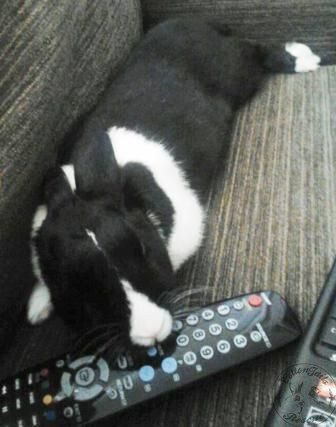
Rabbits generally do not like being handled. This surprises many people, but it is probably the number one reason rabbits end up in rescue centres by their thousand every year. Some rabbits will learn to tolerate it, but most prefer to do their own thing and will only welcome interaction from their owner if they feel in control of the situation and on ground level. There is more on this topic in the general “Rabbit Care” article, but suffice it to say that you will likely be disappointed if you expect a cuddly bundle of joy that wants to sit on your lap every evening to watch the TV.
Well done – you have read the first few paragraphs! Now that you have got this far, let’s look at some practical things you need to know if you will keep house bunnies.
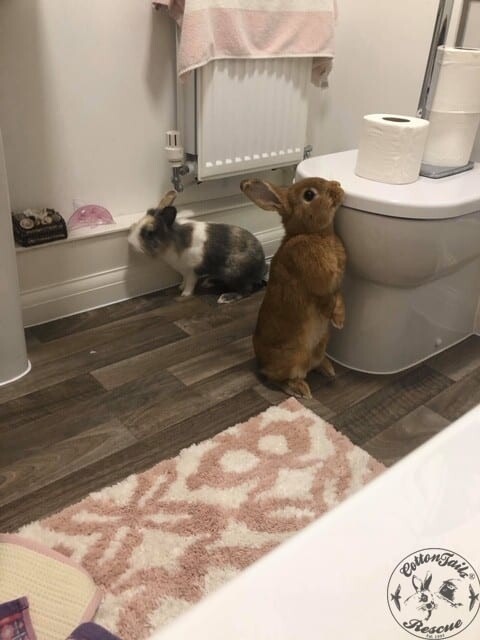
Most neutered rabbits learn to use a litter tray reasonably successfully. They can make interesting and entertaining house pets but can be demanding and destructive, so they are not suitable for everyone. Remember that even house rabbits should ideally have access to the outside from time to time to remain healthy, as health issues due to lack of vitamin D from sunlight do not just affect humans!
You will need to bunny-proof your home, and the equipment required differs from rabbits kept outside. Also, if you live in rented accommodation, you may not be allowed to keep house rabbits, so check on that before purchasing any. Some house bunnies are real saints, rarely nibbling or destroying anything. Others are a total nightmare and can systematically ruin your lovely home bit by bit – chewing skirting boards, furniture, wallpaper off the wall, carpet, lino, etc. That is before you consider their ability to empty their litter tray all over the floor because they used it correctly in the first place! Some rabbits are just not suited to being house bunnies. Keeping such individuals outside in a suitable environment, preferably with a friend, would be better for bunny and stressed owners. It is best not to move a house bunny outside in the winter, however, as the temperature difference would be too much of a shock, so any rehabilitation to outside would need to wait until Spring.
However, some steps can be taken to keep destruction to a minimum, and this is called bunny-proofing your home. This means making sure all cables are completely hidden or out of reach; possibly replacing carpet with something more practical like lino (but this can be ruined also if they decide to chew it); protecting any unique furniture such as table legs, chairs, sofas etc. so it takes more effort for the rabbit to chew the “no” items than it does to interact with their “yes” toys and objects. You can give house rabbits many things to play with, but one of the best is an empty cardboard box with a hole cut into a corner or side – your rabbit will spend hours making the hole bigger so it can sit inside!
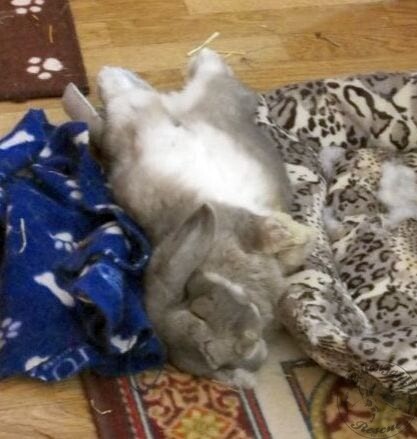
You need to be aware that house rabbits are not cats or dogs, which is an odd thing to say, perhaps. Still, it is essential to understand that a rabbit is a rabbit, and they do what rabbits do, predominantly chewing everything in their environment. This means that in most cases, a rabbit will chew and destroy furniture, wallpaper, cables, carpets, etc., no matter how many toys and other distractions you may give them. Also, whilst it is possible to litter train some rabbits, in most cases, they will still leave some droppings on the floor, which is not ideal when you get up in the morning with bare feet! However, taking on an established neutered pair of rabbits can be great if you are prepared to bunny-proof your home and don’t mind the odd dropping on the floor. It is easier to establish a routine with a rabbit when older than young rabbits that are too full of youthful energy and more challenging to train, especially if not yet spayed or castrated.

Although even house rabbits should not be shut into a cage or hutch at any time, it is best to have an area that is cordoned off, say a corner of a room, just for the first few days as they need to learn where their litter tray is, and also where the food and water area is located. Only once they have established a good tray routine can you let them start to explore a bit, gradually increasing the area they are allowed to be in. Some people like to confine their house rabbits at night, but most rabbits are just as active at night as during the day, so the night area would need to be a good size to allow them still to exercise.
Here is a short film of Peter, who loves coming into the house for a run around the room.
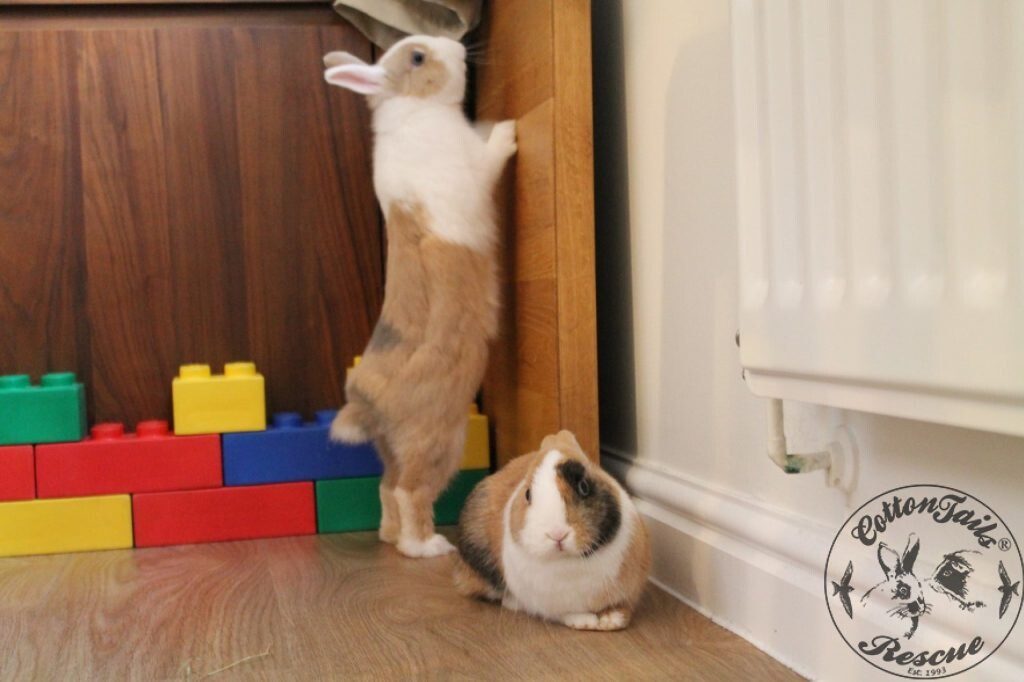
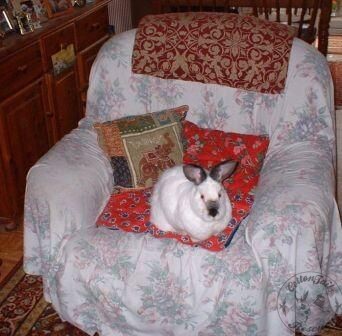
The photo below shows what damage can be done to a live cable in just a few seconds… Thankfully, the rabbit lived to tell the tale!

The two photos below show what can happen if you leave particular objects lying around that your house bunny can get hold of …
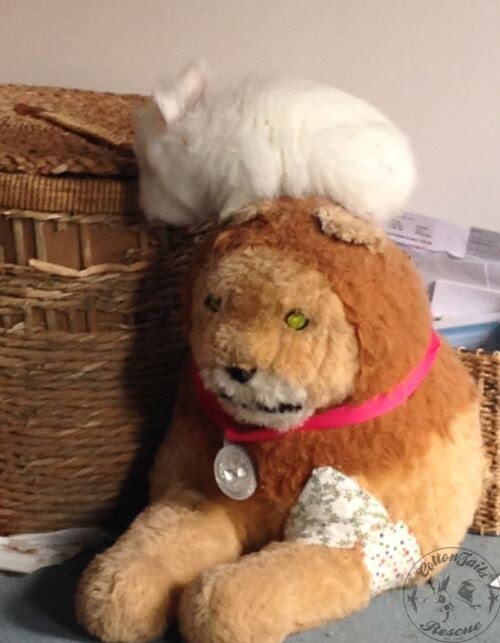
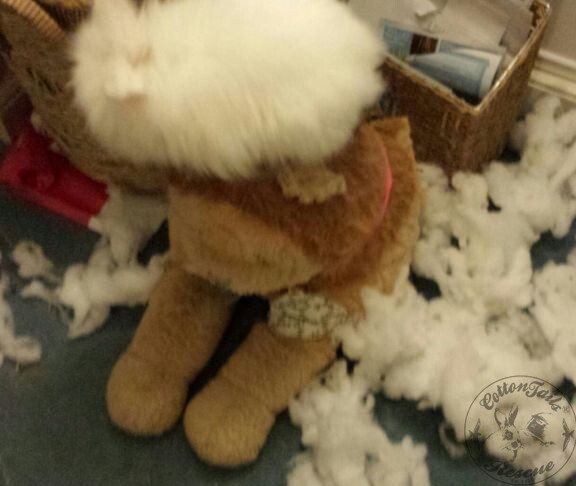
In the photo below, you will see Dexter, a very lucky house bunny who refused to accept a new friend and now lives happily as a single house bun.
